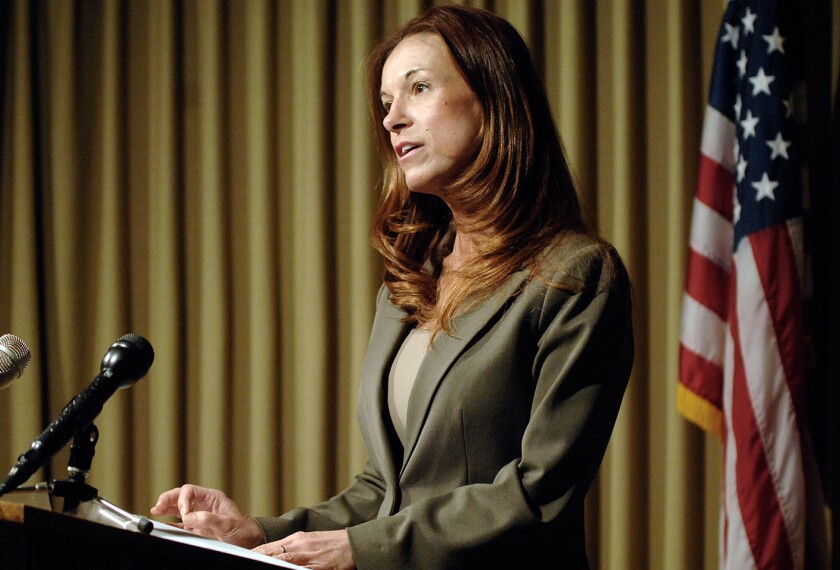Any observant educator knows that after-school and summer learning opportunities are critical elements of a great education, helping students to succeed in school, work, and life. That is especially true when it comes to science, technology, engineering, and math. Out-of-school learning makes STEM come alive for young people, providing more room for engaging hands-on activities and experimentation. It can also link them to potential career exploration in growing fields, including robotics, computer science, advanced manufacturing, and alternative energy.

That is why, as a lead funder in a national effort to increase STEM-learning opportunities for youths both in and out of school, I am concerned about the , particularly those around science learning. They would be devastating for the millions of young people who rely on the essential opportunities after-school and summer learning programs provide.
President Donald Trump’s proposed federal budget for fiscal 2018 would eliminate the single largest funding source for these programs: an annual $1.2 billion for after-school programs supported by the 21st Century Community Learning Centers program, which enrolls more than 1 million students across rural, urban, and suburban communities in all 50 states. But the damage wouldn’t stop there. The budget also proposes slashing other critical supports to STEM learning, such as funding for programs through NASA’s office of education and the Institute of Museum and Library Services, as well as professional development for classroom teachers.
The sadder news is that there are already a lack of opportunities for out-of-school STEM learning. Every summer, millions of children do not have access to programs because there are not enough seats. We need to scale up—not cut back—high-quality after-school and summer learning programs to ensure a spot for every child who wants to participate.
STEM learning opportunities outside of school are particularly important for students who are too often left out and left behind, including those who live in rural communities, low-income children of color, and girls—all of whom already face barriers to pursuing STEM careers. For example, the wealthiest 20 percent of families outspend the poorest 20 percent of families by about $90,000 on their children’s enrichment activities outside of school by the time students are 12 years old. This leads to a 6,000-hour deficit and a significant between middle-class and low-income children.
Even if a student decides one day not to wear a lab coat or become an engineer, STEM skills are vital regardless."
In contrast, students who take part in STEM after-school programs report increased interest in science careers and gains in skills such as creativity, perseverance, and experimentation. A supported by the Charles Stewart Mott Foundation and STEM Next (of which I am the director), confirms this. We looked at the impact of more than 160 after-school programs, surveying nearly 1,600 students in grades 4-12 across 11 states and found that 80 percent of participants in their science-career knowledge. Seventy-eight percent experienced a positive change in their self-reported interest in science; 72 percent reported an increase in their perseverance and critical-thinking skills; and 73 percent reported an increase in “STEM identity”—a personal belief that success in a scientific field is possible.
Eliminating important spaces where young people can gain STEM skills not only hurts them but also would hurt our nation’s economic competitiveness. STEM jobs are among the fastest-growing and highest-paying in the country, but inequitable education leads to the In 2015, according to a report from the National Science Foundation, African-Americans represented just 5 percent of the science and engineering workforce; Latinos represented 6 percent; and women made up less than one-third. The administration’s cuts would undoubtedly diminish those numbers even further.
And even if a student decides one day not to wear a lab coat or become an engineer, STEM skills are vital regardless. By some estimates, nearly 80 percent of all new jobs created nationwide over the next decade will require the developed in STEM learning.
So what would smart STEM education spending look like?
We need to increase federal funding for the 21st Century Community Learning Centers program and other STEM education programs and encourage more states and cities to invest in STEM-specific educational opportunities. Youth-serving organizations and philanthropies, including my own, are increasing investments in innovative, high-quality STEM programs in and out of school, but we need the federal government to strengthen its funding commitment.
We should also build on existing partnerships in national initiatives to expand access and deepen quality for STEM learning. And we should integrate STEM learning in and out of school with workforce-development efforts to widen the pipeline of STEM-engaged youths as early as elementary and middle school.
Our young people are the ones who will drive America’s continued economic prosperity and solve the world’s pressing challenges tomorrow—but only if we invest in their education and development today.




